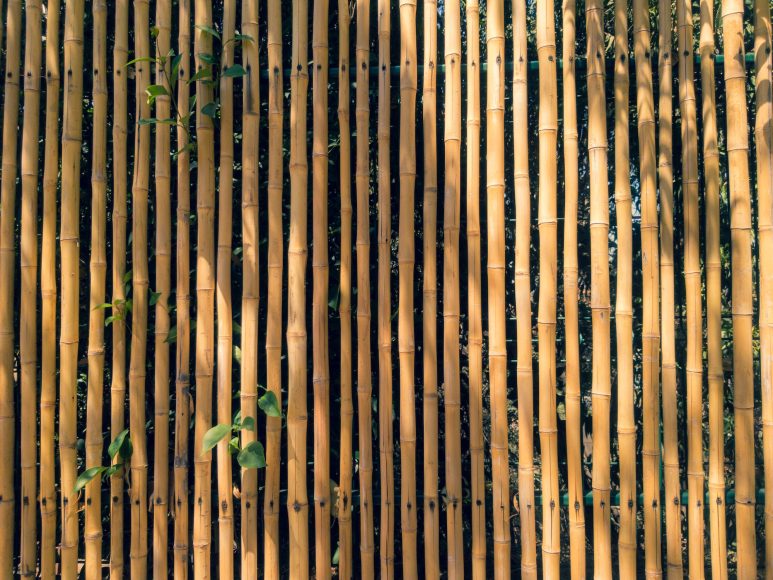Macao’s architectural landscape is a special hodgepodge. Skyscrapers gaze down over modest shophouses and Portuguese-style heritage mansions. Chinese temples rub shoulders with Catholic cathedrals. And no matter their genesis, the vast majority of Macao’s buildings were constructed with the aid of bamboo scaffolding. In some cases – as with open-air bamboo theatres, swimming sheds and more recent artistic ventures – a bamboo structure alone has been the end result.
Bamboo scaffolding remains a common sight today. You’ll see new buildings as well as those undergoing maintenance enveloped in an intricate latticework of poles, forming platforms for builders. Veteran scaffolder Chio Seng Wai says use of this laudably lightweight, strong and low-cost material is declining in the mainland – that it’s gradually being replaced by steel. Macao is one of the last bastions of the practice, so is Hong Kong.
There are several good reasons to expect the practice is here to stay, however. One is that bamboo scaffolding has been inscribed on the government’s list of intangible cultural heritage, along with Cantonese opera and the brewing of herbal tea. Which means it is protected by law. Bamboo also has ardent fans in the city, eager to showcase this giant relative of grass’s impressive adaptability. These architects use it in large-scale art installations and incorporate bamboo into permanent structures.
A short history of bamboo scaffolding
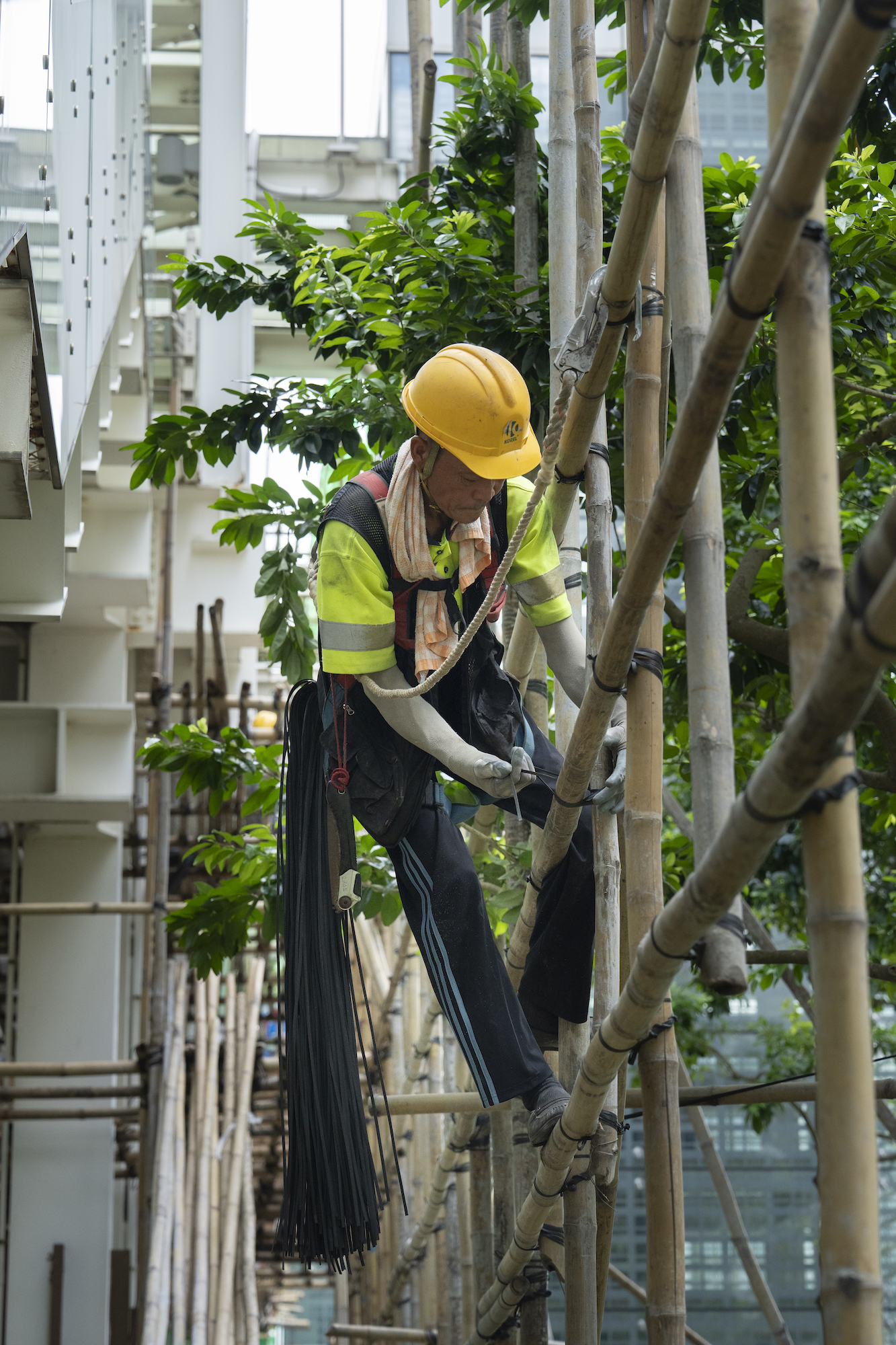
In China, bamboo scaffolding dates back millenia. It can even be spotted in one of the country’s most treasured artworks, Along the River During the Qingming Festival by Song dynasty painter Zhang Zeduan (1085–1145). As for its historical use in Macao, the material has been well documented in works by travellers from Europe. The Italian writer Giovanni Francesco Gemelli Careri, for instance, wrote about a performance held in a bamboo theatre – a form of open-air structure used as an entertainment venue – in his 1699 book, Giro Del Mondo. In the mid-1880s, the German artist Eduard Hildebrandt created a detailed woodcut showing the inside of such a theatre; it included people clambering up the scaffolding for a better glimpse of the show.
As well as theatres, there used to be bamboo ‘swimming sheds’ along Macao’s coast. These little huts where bathers could get changed were usually coupled with a bamboo pier, stretching out over the rocky shoreline. Swimming sheds were a common sight between the 1940s and 1980s.
As a scaffolding material, bamboo has always been favoured for its resilience and flexibility. It is also incredibly lightweight, making it easy to transport and quick to erect. In addition to these qualities, it is the fastest growing plant on the planet – with some subspecies sprouting more than a metre each day. This makes it a renewable resource, and far better for the environment than steel production.
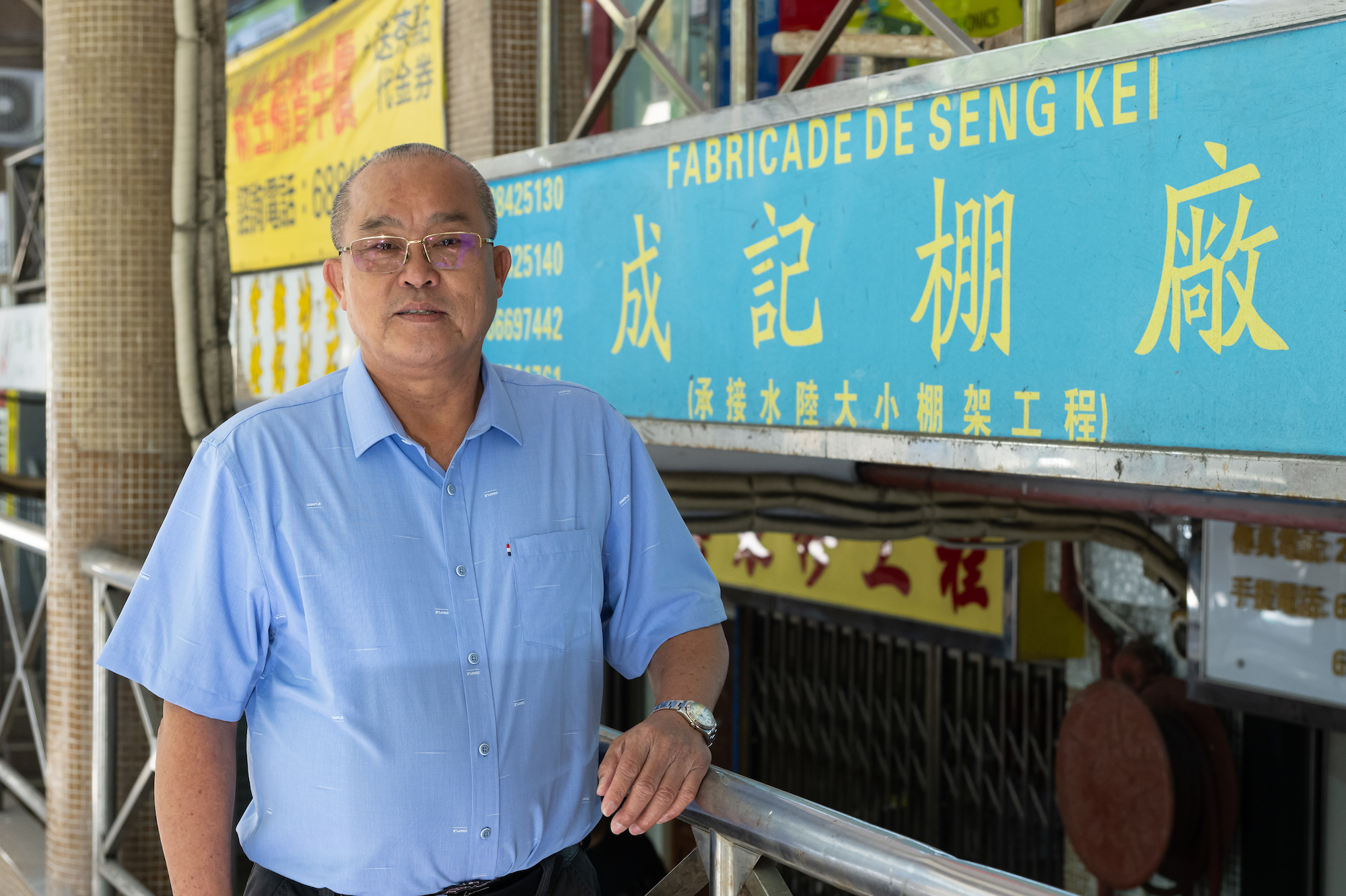
Most of Macao’s bamboo is imported from the Guangxi autonomous region in southern China. The poles used for scaffolding fall into two types: thick, load-bearing mao jue and the more slender kao jue, used for bracing and horizontal support. Up until the late 1970s, these poles arrived on rafts that were themselves made of bamboo, says Chio, who is 68. They were towed by ships along waterways. These days, they tend to travel in trucks.
Chio says that steel scaffolding was introduced to Macao in the early 2000s, courtesy of Western property developers. “Westerners [investing in construction] here preferred steel, but local Chinese favoured bamboo scaffolding – so, we started to combine them,” he says. The steel-bamboo hybrid model has remained popular and Chio says he can’t see steel taking over any time soon.
A more recent change in the industry has been that less local people are interested in pursuing careers as scaffolders. According to Chio, there were about 150 scaffolders in the city when he started – and a 50/50 split between locals and migrant workers. Today, there are about 200 migrants working as scaffolders and only around 30 locals.
“It’s difficult to engage the young people with what we do,” Chio explains. “I’ve provided some training sessions teaching young people scaffolding skills, but in the end, only two trainees stayed behind. Then both left [the industry] after working for around nine months because they found the work too challenging.”
Another veteran scaffolder, Leung Wo, echoed Chio’s sentiment. “As we get older, we have to rely more and more on migrant workers.”
A scaffolder’s story
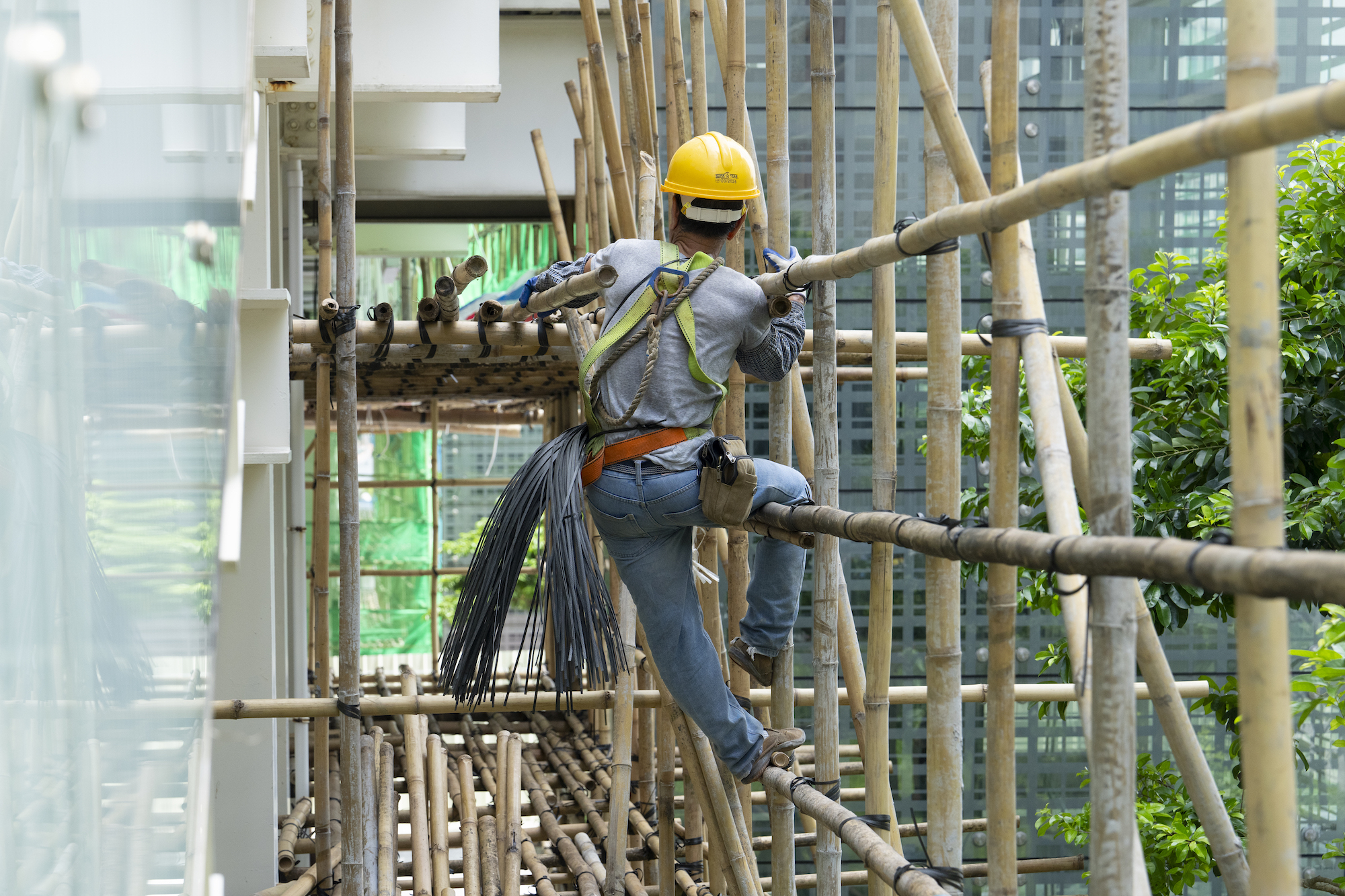
Chio himself joined the industry in 1979, the same year he moved to Macao. The Zhuhai-born 22-year-old learned how to erect bamboo scaffolding – which is a trade in itself, separate from building – from his highly experienced father and uncle. Chio’s uncle, Chio Tak Siu, was a particularly effective teacher and Chio says many of Macao’s bamboo scaffolders owe their skills to his patience. According to him, it takes at least three years of training and practice to become a decent scaffolder.
When Chio began working with bamboo, strands of the plant’s fibres (called splints) were used to tie the poles together. They were rough, and the ragged fibres hurt his hands. “Bamboo splints must be soaked in water in advance to be soft and resilient enough,” Chio explains. “But on winter days, they tend to get crispy … they are a lot of work to handle.” In the early 1980s, nylon ties became the norm.
Bamboo scaffolders work largely by intuition, according to Chio. They measure distances and poles with their eyes, then create their towering, layered lattices based on an image in their minds. In his early days, Chio remembers scaling to dizzying heights, rain or shine, without a safety harness, helmet, gloves or even shoes. These days, scaffolders are fully decked out in safety equipment.
In 1997, after almost 20 years in the industry, Chio established his own bamboo company – Seng Kei. The company currently employs 13 locals and around 80 migrants, who come from all over the mainland. Most of their current projects use both bamboo and steel scaffolding, together. Notable buildings that have relied on Seng Kei’s skills have included integrated resorts on the Cotai Strip.
Bamboo’s future in Macao
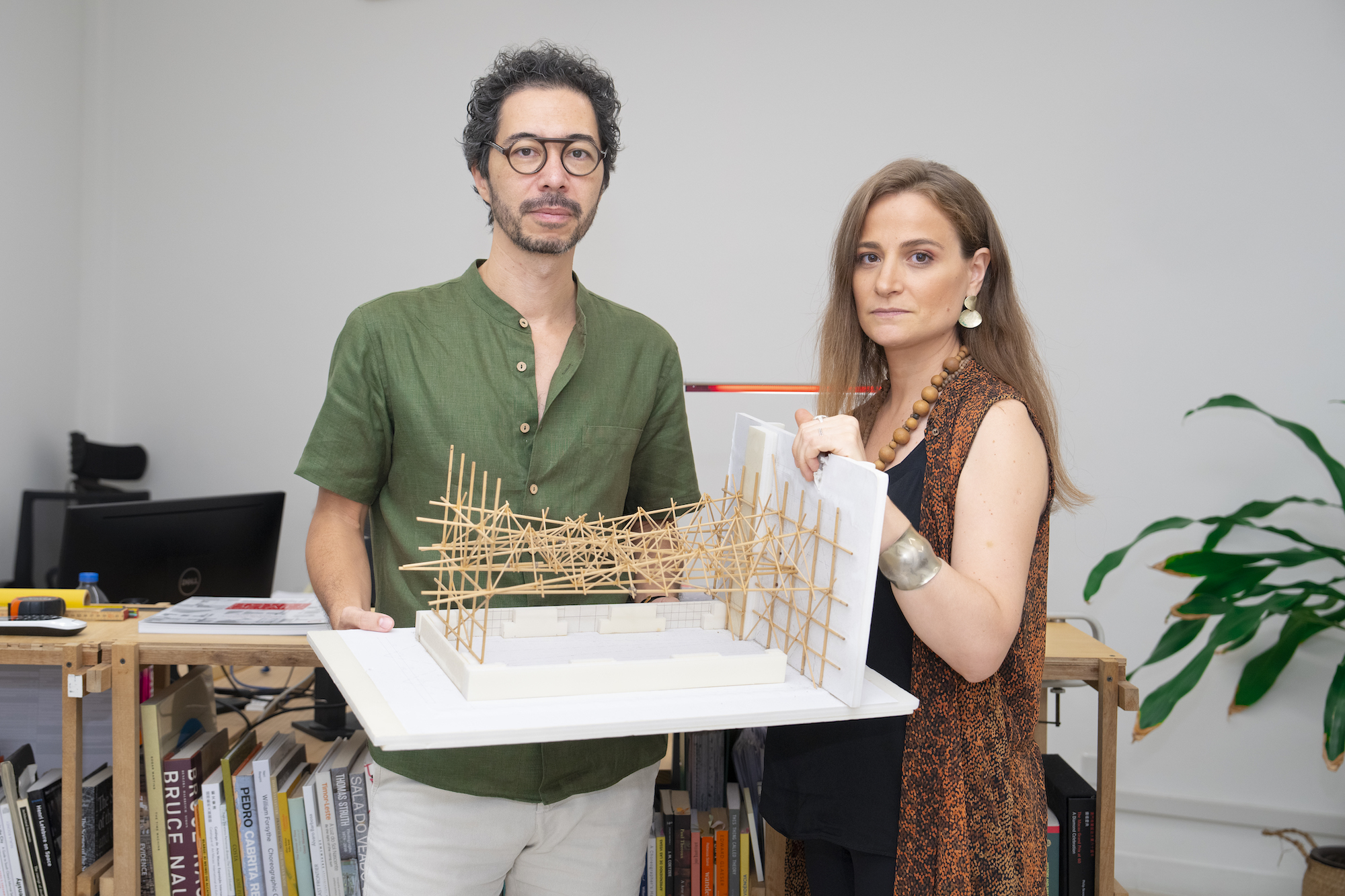
Another line of work Seng Kei specialises in is the building of bamboo theatres, using the same principles as scaffolding for construction projects. One of these, at the A-Ma Temple, caught architects João Ó and Rita Machado’s eye back in 2013. The Portuguese pair – who established their Macao-based architecture firm, Impromptu Projects, that same year – have gone on to produce art installations, ephemeral structures, and permanent work using bamboo in Macao and abroad.
During the A-Ma theatre’s construction, Ó and Machado visited the site daily, marvelling at how quickly and deftly the bamboo scaffolders worked. They wanted to document the process, but the intricacy of the theatre’s layers were too difficult to capture in photographs. Instead, they put pencil to paper, noting down the thickness of poles and various other measurements.
After that experience, 46-year-old Ó and 41-year-old Machado wanted to learn everything they could about bamboo scaffolding. Fortunately, they found Chio and his colleagues more than willing to share their knowledge. “Mr Chio was very nice and he talked about everything, there were no secrets,” says Ó, who grew up in Macao and speaks fluent Cantonese.
“We came to understand they have a master’s vision, knowledge passed down through generations – and they feel the need to share it,” Machado adds. She moved to Macao in 2006, to write her thesis on urban development.
Ó and Machado have collaborated with Chio and his colleagues ever since. Before they start building whatever is they’re working on, they create a 3D model of the structure and seek feedback from the scaffolding masters. Ó says, “We speak the same spatial language …. We both look at forms in space.”
The architects have also attended bamboo workshops and conferences around the world, learning different techniques for working with the material – and broadening their understanding of the types of projects it can be applied to.
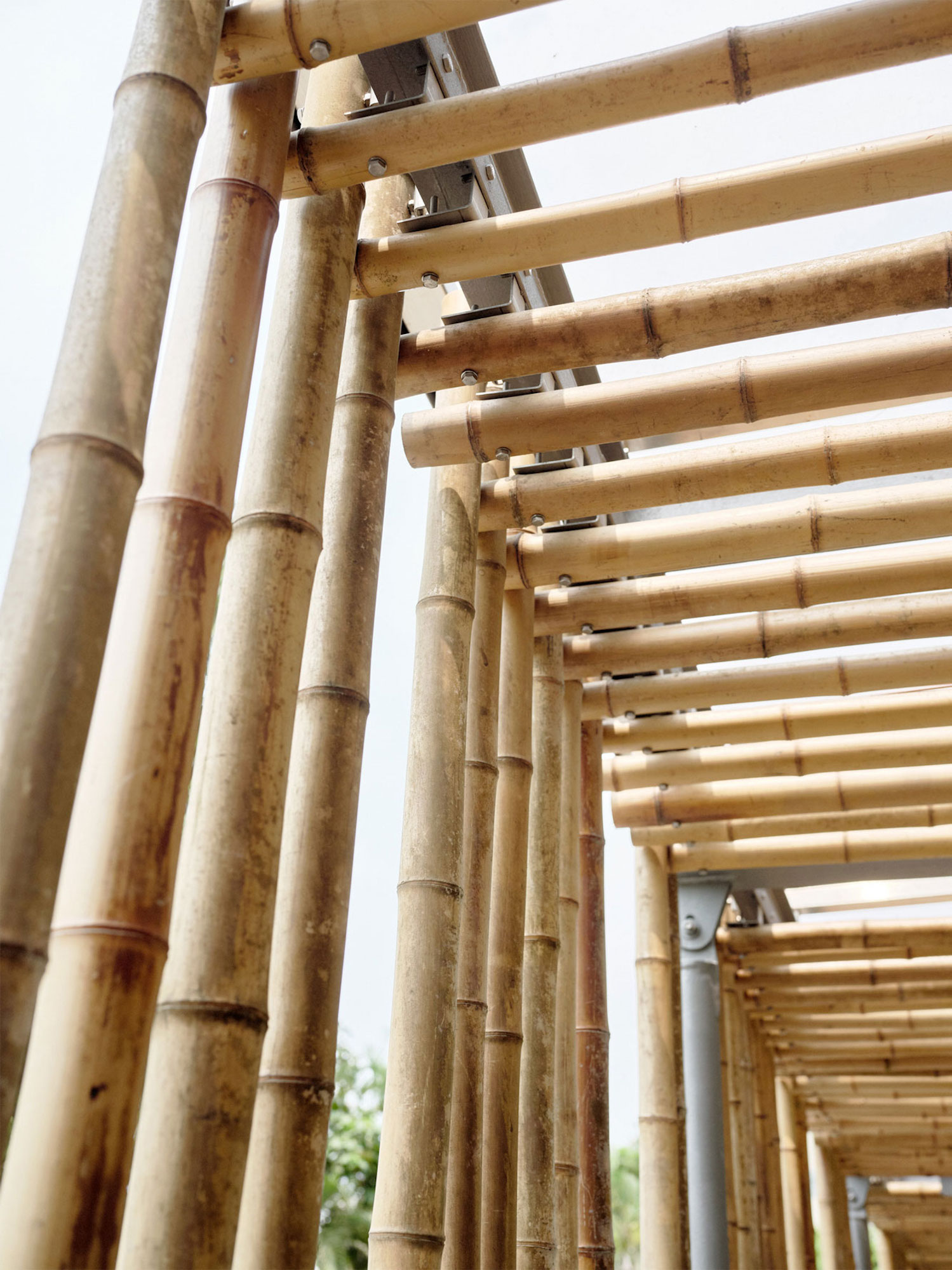
“In Southeast Asia, the techniques are quite similar to what you find in Macao and Hong Kong, but in Colombia, for example, they build permanent houses and structures with bamboo,” says Machado. “It needs to be treated, to prevent it from being affected by moisture and fungus – and needs to be protected from both sun and rain.”
To date, most of the duo’s bamboo projects have been temporary art installations. For example: they erected ‘Chasing Sounds’, a maze-like arrangement of bamboo fences that varied in height, in Hong Kong’s botanical garden in 2021. “The idea of a [temporary installation] is about impact, community and gathering. It’s about creating content in a public space,” says Machado. “The advantage of using bamboo is it’s cheap and easy to set up and dismantle.”
But Machado and Ó incorporate bamboo into architectural projects intended to last a long time, too. For example, in their fit-out of the Grand Prix Museum’s new coffee shop. They have also built one permanent bamboo structure, called ‘Promenade Urbaine’, at the bottom of Taipa Hill. Promenade Urbaine is a barrier between a footpath and road – an 800-metre semi-archway of bamboo poles that pedestrians walk through. Ó says it was designed to maximise people’s exposure to nature.
The architects say they see huge potential in bamboo, and will continue reinterpreting it as a mainstream building material with uses beyond scaffolding. It is afterall, part of the city’s intangible heritage.
